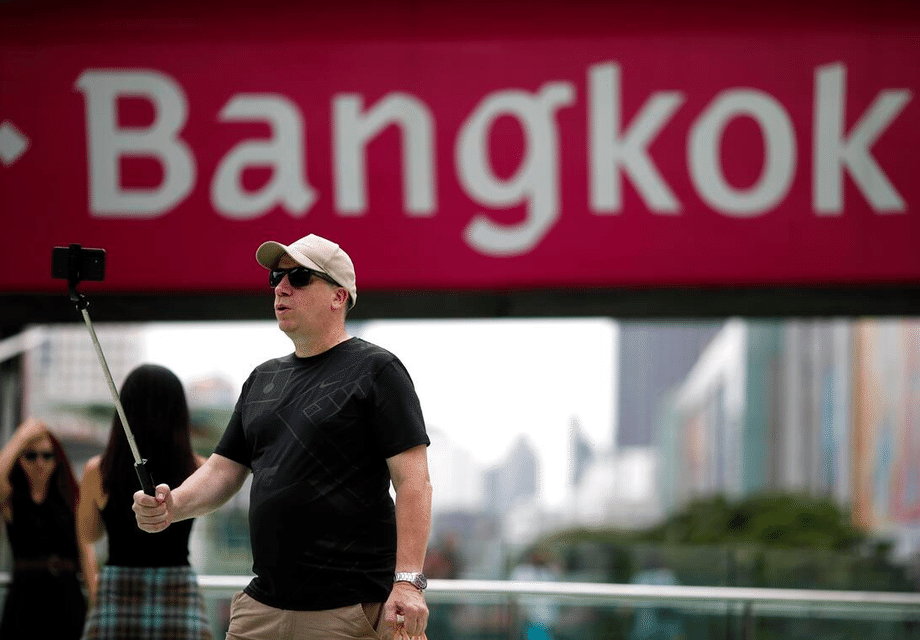Why a stronger baht is changing travel plans
Thailand’s currency has surged to its strongest level in years, and the shift is rippling through one of the country’s core industries. A firmer baht means foreign travelers receive fewer baht when they exchange their home currency. That translates into higher prices on the ground for everything from hotel rooms to street food. The Tourism Authority of Thailand (TAT) warns that tourism revenue could fall by 15 to 17 percent from earlier expectations as visitors trim budgets or pick cheaper regional options. Arrivals data backs the pressure: from Jan 1 to Sept 21, Thailand recorded about 23.45 million foreign visitors, down 7.44 percent from the same period a year earlier, according to official figures.
- Why a stronger baht is changing travel plans
- How Thailand now compares with Japan and Vietnam
- US visitors slow, Europeans hold up
- What industry leaders and the central bank are saying
- Why the baht has moved so fast this year
- How the industry is coping on the ground
- Tourism is not the only sector feeling the currency shock
- Possible courses of action for policymakers and industry
- What to Know
The baht has appreciated about 7.24 percent since January, moving from around 34.23 to the US dollar to about 31.75 by September. Among major global currencies, it currently ranks as one of the strongest against the dollar, trailing only the Swiss franc over this period. The upswing did not happen in isolation. A weaker US dollar and policy turbulence after reciprocal tariffs announced in April, coupled with capital flows and rising gold prices, have helped push the baht higher. TAT officials say the currency’s strength has already influenced travel decisions, with Thailand increasingly seen as costlier than nearby Japan and Vietnam. At the same time, some Thai travelers with higher purchasing power are heading overseas to destinations where local currencies have softened, especially Japan, Vietnam and China.
How exchange rates turn into higher holiday bills
To see how fast the math changes, consider a family that plans to exchange 1,000 US dollars. Early in the year, that budget yielded roughly 34,230 baht. At around 31.75 baht per dollar in September, the same exchange nets about 31,750 baht. The difference is roughly 2,480 baht, enough to cover a night in a midrange hotel in many Thai cities or several days of meals for two. Multiply that across a week, or across a large tour group, and the reduced purchasing power becomes visible in room upgrades not taken, spa appointments skipped, or fewer sightseeing add-ons. This is the core reason a strong local currency can curb both the number of visitors and the amount each visitor spends.
How Thailand now compares with Japan and Vietnam
Travelers do not decide in a vacuum. When the baht strengthens at the same time rival destinations are holding steady or even undervalued, Thailand begins to look less like the region’s top value pick. Japan’s tourism boom this year has been driven by very attractive exchange rates for many foreigners, plus an expansion in flight capacity. Vietnam has also improved flight connectivity and simplified visa rules, which helps close the distance on price and convenience. When travelers weigh itineraries and currency rates side by side, the baht’s gain makes Thailand feel pricier, even if local businesses try to hold down listed prices.
Thai officials acknowledge that the perception of value has shifted. TAT has been reassessing promotions to keep Thailand competitive in shoulder and high seasons, while urging operators to craft packages for markets where currency has been less of a headwind. The agency is also nudging campaigns that highlight quality, not just price, so that travelers view a Thai trip as a worthwhile purchase rather than a bargain that suddenly vanished.
Thapanee Kiatphaibool, the TAT governor, said the stronger currency is shaping visitor choices, especially in cost sensitive segments.
“The stronger baht has influenced travel decisions, particularly among foreign tourists, because it raises the overall cost of visiting Thailand.”
That shift shows up in booking windows, destination mixes, and on-the-ground spending patterns. Operators report more last-minute comparisons with Japan and Vietnam when travelers realize their exchange rate is less favorable than expected.
US visitors slow, Europeans hold up
The clearest pullback is coming from the United States, a source market that carries high flight costs and longer travel times. US arrivals were rising through April, then contracted by about 2 percent from May to August compared with a year earlier. Between Sept 1 and Sept 19, Thailand welcomed around 33,400 American tourists, a decline of about 5 percent from the same period last year, according to immigration data. A weaker dollar shrinks purchasing power in Thailand, and tariff related uncertainty at home has discouraged some households from big-ticket international trips.
Europe paints a different picture. Since April, arrivals from the United Kingdom, France, Switzerland, Germany, Russia, and parts of Eastern and Southern Europe have been resilient, in some segments posting double digit monthly growth. Many Europeans booked their trips and locked in airfares months ago. Airlines have added seats from Europe and competition has pushed prices down on several routes. Cheaper flights can offset a stronger baht for these travelers, which helps explain why visitor numbers from Europe have not dropped as sharply as those from the United States.
What the numbers show so far
From Jan 1 to Sept 21, Thailand counted about 23.45 million foreign arrivals, a decrease from the same period last year. Malaysia is the top source market with around 3.38 million visitors, followed by China at about 3.3 million. These figures show a partial but not complete recovery compared with pre-pandemic peaks, and they also underline how the mix of visitors is shifting. Long haul markets that can find flight bargains and lock in packages early are proving stickier, while price sensitive short haul segments are quicker to switch destinations when exchange rates turn against them.
What industry leaders and the central bank are saying
Hotel operators, travel agencies, and business groups are cautious. They see the immediate damage in tighter traveler budgets and mild softness in bookings for the coming season. The Federation of Thai Industries (FTI) has warned that the currency is making the country more expensive, which could deter tourists and slow investment plans for new hotels and attractions. Industry groups want stable exchange rates that reflect domestic economic conditions so that businesses can plan pricing and staffing with more confidence.
Analysts say the math is unforgiving. When a foreign currency buys fewer baht, tour prices, meals, and excursions feel more expensive. Kobsidthi Silpachai, head of capital markets research at a leading Thai bank, framed the issue in plain terms.
“A strong baht reduces export and tourist revenue via both pricing and volume effects.”
Hotel leaders share a similar caution. Some say the stronger baht has not yet led to mass cancellations. The fear is a drawn-out period of currency strength that carries into the next travel season. Theinprasit Chaiyapatranun, president of the Thai Hotels Association, described that concern.
“If the baht remains strong for an extended period, such as continuing into next year, there will likely be an impact.”
Thailand’s central bank has signaled that it is watching the currency closely. Outgoing leadership said discussions are underway on measures to smooth volatility and counter excessive strength. Government leaders have also spoken about the need to coordinate policy. Businesses want that coordination to respect the central bank’s independence while avoiding surprises that unsettle markets.
FTI chairman Kriengkrai Thiennukul has argued publicly that Thailand is becoming a more expensive destination than rivals and urged authorities to keep the baht in a range that supports tourism and exports. He pointed to competitor moves, such as Vietnam’s increase in direct flights and easier visas, as evidence that Thailand must act on both currency and competitiveness at the same time.
Why the baht has moved so fast this year
The currency’s jump is tied to several overlapping forces. The first is the dollar itself. The greenback has weakened this year as investors digested the trade tariff cycle, shifting expectations for US interest rates, and softer data in parts of the US economy. When the dollar drops, many Asian currencies tend to gain. The baht’s rise has been stronger than many peers because of domestic and regional factors that amplified the move.
Capital flows, gold and interest rate expectations
Thailand often sees meaningful swings in currency when global investors adjust their positions in Thai government bonds and regional stocks. Rising global gold prices can also matter for baht dynamics because Thailand is an active gold market. When gold inflows and investment inflows line up with lower US yields or expectations of US rate cuts, the baht can strengthen quickly. The country also benefits from tourism receipts that help the balance of payments, a flow that becomes more visible during peak season. This set of forces has pushed the baht to a level that pleases importers and travelers from Thailand heading abroad, but it complicates budgets for foreign tourists and exporters who earn in dollars or euros but pay Thai expenses.
Other regional currencies have followed different paths this year depending on domestic policies and investor sentiment. That divergence helps explain why Thailand now feels less competitive on price next to popular destinations where local currencies have not risen as fast, or where governments have introduced fresh incentives to draw visitors.
How the industry is coping on the ground
Several market responses are cushioning the blow. Airlines have expanded capacity into Thailand, especially from Europe, and competition has lowered fares on some routes. For many travelers, a cheaper flight can offset a stronger currency once they land. Hotels have generally kept a tight lid on room rates, with only modest increases in popular beach towns expected during the high season. In destinations like Hua Hin and Cha Am, operators expect occupancy in the range of 70 to 80 percent in peak months, while keeping rates at levels that preserve Thailand’s value reputation.
Still, not every destination is running hot. Pattaya’s hospitality sector has reported relatively strong weekends and holidays, but softer weekdays. Smaller and mid-sized operators say cash flow remains stretched. A domestic co-payment subsidy helped fill rooms in some periods, although administrative delays and limited digital payment facilitation have made it harder for smaller hotels to benefit at the same pace as large properties. Businesses in this bracket are especially sensitive to any further currency surge because they compete on price and repeat custom.
Chinese travelers and value perception
The Chinese market illustrates how currency moves shape behavior. Industry estimates say arrivals from China are weaker this year compared with last year, with many price conscious tourists shifting to Japan, where the yen’s earlier weakness offered strong value and where flight options have expanded. Short haul markets are highly sensitive to perceived bargains. A few percentage points in exchange rates can flip a family’s choice when destinations feel comparable on attractions and convenience. Thailand is trying to counter that with targeted promotions, safety and service assurances, and bundled packages with airlines and tour operators.
Tourism is not the only sector feeling the currency shock
Exporters are seeing the same math from the other side. A strong baht reduces the local revenue that Thai firms receive from dollar sales, and it makes Thai goods look more expensive next to competitors. The electronic parts and automotive supply chains, where Thailand is a regional hub, face tight margins and global price competition. Business groups warn that if the baht stays stronger for an extended stretch, export volumes could ease and hiring plans could be delayed.
There are offsetting effects. A stronger baht makes imported inputs cheaper, which can lower costs for some manufacturers, and it stretches the overseas budgets of Thai households who travel or send children to study abroad. Those gains often flow to larger firms and higher income households, while smaller exporters and tourism operators feel the currency pressure more directly. That uneven distribution is why trade groups, chambers of commerce, and travel associations are pushing for stability and predictability in currency management.
Possible courses of action for policymakers and industry
The central bank has a familiar set of tools for navigating a strong currency. It can intervene to smooth volatility and discourage one-way speculation, keep a close dialog with the finance ministry to align macro policies, and give guidance that reduces surprises. The goal is not to pick a fixed level for the baht, but to steady expectations so that businesses can plan seasonal pricing and hiring.
Industry has levers too. Airlines and hotels can continue to use advance-purchase discounts and fixed-price packages that blunt the impact of exchange rate swings. Travel sellers can quote bundled prices in the traveler’s home currency for key markets to reduce perceived risk. Faster visa processing, expanded visa exemption windows for priority countries, and new air links into secondary Thai cities can help operators reach travelers who value convenience as much as price. Destinations are also investing in safety, cleanliness, and service upgrades that justify the spend for midrange and premium travelers. Those travelers often stay longer and spend more per day, which can keep revenue stable even if headline arrival numbers are uneven.
Several of Thailand’s competitors are already moving on these fronts. Vietnam has added direct flights and broadened visa access. Japan’s tourism marketing is capitalizing on value perceptions while airlines keep seats affordable. Thailand’s edge has always combined warm service, diverse experiences, and a broad range of price points. Keeping that edge during a period of currency strength will require sharper coordination between public agencies and private operators.
What to Know
- The baht has strengthened about 7 percent this year, from roughly 34.23 to about 31.75 per US dollar, squeezing foreign tourists’ purchasing power.
- TAT estimates Thailand could miss 15 to 17 percent of projected tourism revenue as visitors spend less or choose cheaper regional destinations.
- From Jan 1 to Sept 21, foreign arrivals reached about 23.45 million, down 7.44 percent from a year earlier. Malaysia and China are the top source markets.
- US visitors have slowed since May as the dollar weakened and travel costs rose. Arrivals from parts of Europe remain resilient, helped by cheaper airfares and advance bookings.
- Industry leaders warn that a prolonged period of currency strength would hit bookings and investment. Business groups urge policy coordination to stabilize the baht.
- Airlines and hotels are offsetting some pain with added seats, competitive fares, and modest room rate increases. Popular beach towns still expect healthy occupancy in peak months.
- Exporters face the same currency squeeze, since a strong baht trims local revenue from dollar sales and weakens price competitiveness in key sectors.
- Stability is the priority. Central bank steps to smooth volatility, plus targeted tourism promotions and improved connectivity, can help bridge this period of currency strength.




